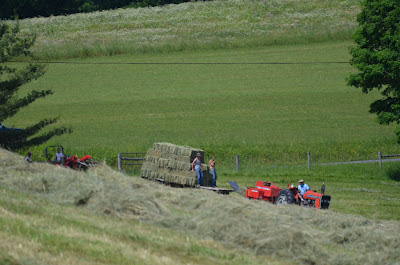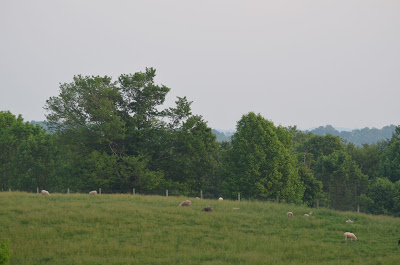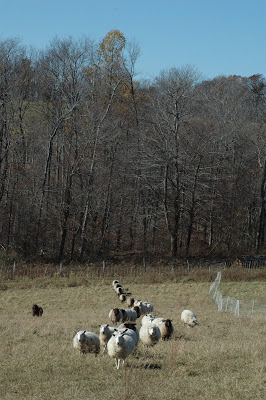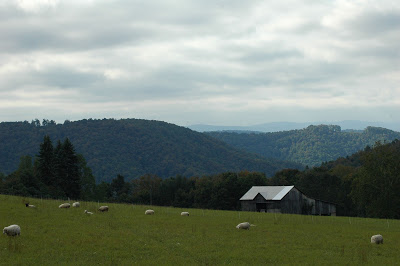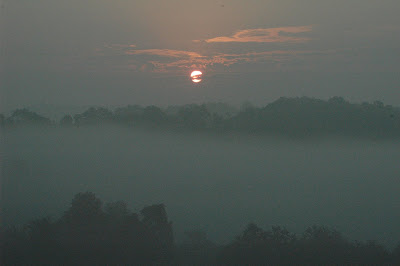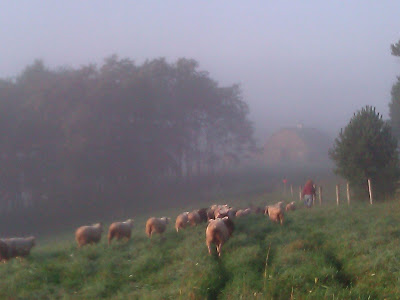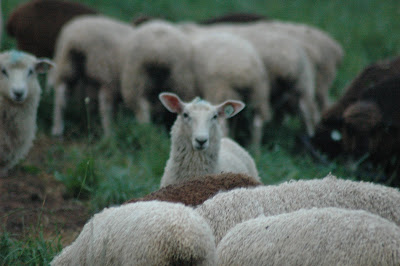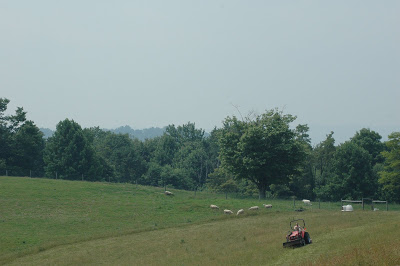Tag: flock health
Yesterday
If you haven’t already, be sure to comment on Wednesday’s post – it’s a give-away!
First Shots
This beautiful, pastoral scene… ewes and lambs peacefully grazing… is really quite different from the activity on the farm just a few hours earlier. Let’s rewind…
We rounded up all the ewes and lambs bright and very early yesterday morning (that was a zoo, there should have been a movie made) and brought them back to the barn for a health check-up. We herded them through a moving lane we put up on the outside of the perimeter fencing the night before. It took three of us (Thanks, Mom!), two on the inside and one on the outside. Once, again, the shepherds’ crooks were invaluable. We did FAMACHA checks on the ewes; most were twos, but we had a few we needed to worm. The lambs received their first CD-T shots, FAMACHA checks and tail checks.
We have had a problem with fly-strike this year at the tail docking area… the very thing we are trying to prevent by docking their tails. We’ve never had this problem before. (It’s probably a result of the unusually mild winter; the flies are bad already this year. Has anyone ever tried Fly Parasites?)
Everyone behaved very well in the barn and were very relaxed and quiet. That was wonderful because it made everything go pretty smoothly. After the shepherdess/s did some re-hydrating, we all headed back out the barn door, but to a new pasture. The ewes and lambs are now in the knoll pasture. It was very noisy for several hours as it took quite awhile for the mamas and little ones to find each other again. But everything has quieted down and they seem quite happy, once again.
(If you’re new to our blog, you may be wondering about the farming detail in some of our posts. We began our blog as a farm journal, somewhere we can go to quickly find… when did we do that? what did we do? We keep very detailed paper records also, but we can access this from basically anywhere… even in the field on our phones 🙂
Big Weekend Plans
Musical Pastures
Good Morning, Sunshine
Lamb Scoring
Saturday was FAMACHA scoring day again for the lambs. It was foggy and wet, but they came in to the barn like troopers. They are slowly beginning to understand the routine. Scores were not quite as good as the last time, but we have had a lot of hot and wet weather which can make parasite loads spike. We kept three lambs in the barn for some extra care as they scored 4’s making them a little anemic. We will give them vitamin shots and an iron shot to give them a little boost to get back on the right track.
Scoring the Lambs
We brought the lambs back to the barn very early Saturday for FAMACHA scoring. This is a system that uses a chart to evaluate the mucous membranes of the lower eyelid to show the presence of anemia, an indicator of barber pole worms, the primary parasite in our area. We also evaluate their body condition, general appearance and behavior. We record the results on charts so that we can track the health condition of each lamb. They each get a bright blue chalk mark on the top of the head after checking.
We were really pleased with the results, given the extreme heat we have been experiencing and that weaning occurred about two weeks ago. Almost 25% of the lambs scored 1 (highest), and we only needed to worm about 10% of them. Not a single lamb scored below 3 (4 and 5 are considered cause for alarm). Hopefully the rest of the summer will go as well. This is a very pretty group of lambs.





